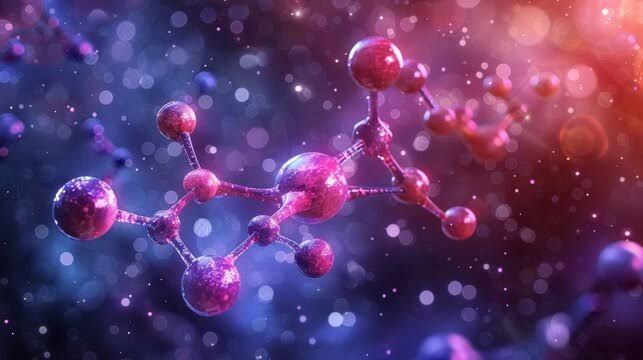
Understanding Hormones
Hormones are essential chemical messengers produced by endocrine glands that travel through the bloodstream to target cells and tissues throughout the body. They serve as an integral part of the body’s complex control system, coordinating a vast array of physiological processes. This guide provides a step-by-step overview of their vital roles, rhythmic patterns, and regulatory mechanisms.
Foundational Role of Hormones
Hormones act as the body’s internal communication network, working alongside the nervous system to maintain homeostasis and coordinate long-term processes. Unlike the rapid, short-lived signals of the nervous system, hormonal signals are typically slower to initiate but have more prolonged effects. They influence almost every cell, organ, and function in the body, ensuring integrated physiological responses.
Key Functional Areas Regulated by Hormones
Hormones exert control over critical bodily functions across several domains:
- Metabolic Functions: Hormones regulate energy balance, nutrient absorption, storage, and utilization. Examples include insulin and glucagon (glucose metabolism), thyroid hormones (metabolic rate), and cortisol (stress response and metabolism). They ensure the body efficiently converts food into energy and building blocks.
- Developmental Growth: Hormones are crucial for growth, maturation, and differentiation from conception through adulthood. Growth hormone (GH) stimulates cell division and tissue growth, while thyroid hormones are vital for brain development in infancy and overall growth. Sex hormones (estrogen, testosterone) drive puberty and secondary sexual characteristics.
- Reproductive Functions: Hormones govern the development and maintenance of reproductive organs, regulate fertility cycles, pregnancy, childbirth, and lactation. Gonadotropins (FSH, LH) from the pituitary stimulate the gonads, which produce sex hormones. Prolactin stimulates milk production, and oxytocin facilitates labor and milk release.
Major Hormonal Biorhythms
Hormone secretion is not constant but often follows predictable cyclical patterns known as biorhythms. These rhythms are often synchronized with environmental cues (like light/dark cycles) and are controlled by internal biological clocks. Key types include:
- Circadian Rhythms: Approximately 24-hour cycles. A classic example is cortisol, which typically peaks in the morning to help prepare the body for activity and is lowest at night during sleep. Growth hormone secretion is often highest during certain phases of sleep.
- Infradian Rhythms: Cycles longer than 24 hours. The female menstrual cycle, controlled by fluctuating levels of estrogen, progesterone, FSH, and LH over approximately 28 days, is a prime example.
- Ultradian Rhythms: Cycles shorter than 24 hours, often involving pulsatile secretion. Many hormones, like GnRH, LH, and growth hormone, are released in bursts throughout the day, rather than constantly. This pulsatile pattern is often critical for maintaining target tissue sensitivity.
These rhythms are vital for synchronizing bodily functions with daily or cyclical demands and ensuring appropriate physiological responses occur at the right time.
General Aspects Governing Hormone Secretion Regulation
Hormone secretion is tightly controlled by various stimuli to ensure appropriate levels are maintained:
- Humoral Stimuli: Changes in the levels of certain ions or nutrients in the blood directly stimulate or inhibit hormone release. For instance, high blood glucose stimulates insulin secretion, while low blood calcium stimulates parathyroid hormone (PTH) release.
- Neural Stimuli: Nerve impulses can directly stimulate endocrine glands to release hormones. The sympathetic nervous system, for example, stimulates the adrenal medulla to secrete epinephrine and norepinephrine during stress. The hypothalamus, part of the central nervous system, controls the pituitary gland via nerve signals and releasing/inhibitory hormones.
- Hormonal Stimuli: Many endocrine glands are stimulated to release their hormones by hormones produced by other endocrine glands, often in a hierarchical chain. For example, releasing hormones from the hypothalamus stimulate the anterior pituitary, which in turn releases tropic hormones (e.g., TSH, ACTH) that stimulate peripheral endocrine glands (thyroid, adrenal cortex) to secrete their respective hormones.
These different stimuli often act in concert, integrating multiple signals to fine-tune hormone output.
Importance of Feedback Relationships in Determining Circulating Hormone Levels
Feedback mechanisms are the primary way the body maintains circulating hormone levels within a narrow, optimal range. This involves the response of the target tissue or the hormone itself influencing further hormone secretion.
- Negative Feedback (Most Common): In negative feedback, high levels of a hormone or the physiological response it causes inhibit further secretion of the hormone. This acts like a thermostat: when the ‘temperature’ (hormone level or effect) gets too high, the ‘heater’ (gland secreting the hormone) is turned down. For example, when blood glucose levels are high, insulin is released. As insulin lowers blood glucose, the stimulus for insulin secretion is removed, and insulin release decreases. In hormonal cascades (like the hypothalamus-pituitary-peripheral gland axis), the final hormone in the chain can inhibit hormone release from the pituitary and/or the hypothalamus, preventing overproduction and ensuring stable levels. Negative feedback is crucial for maintaining homeostasis and preventing excessive hormonal effects.
- Positive Feedback (Less Common): In positive feedback, the effect of a hormone stimulates further secretion of that hormone. This mechanism is typically used to drive a process rapidly to completion rather than maintain stability. An example is the surge of estrogen before ovulation, which stimulates a large surge of LH from the pituitary, leading to ovulation. Another is oxytocin release during labor contractions; contractions stimulate more oxytocin release, intensifying contractions until birth occurs. Positive feedback loops are usually short-lived and part of a larger regulatory process that eventually includes a negative feedback component or removal of the stimulus.
The interplay of these feedback loops, particularly the dominant negative feedback, is fundamental to precisely controlling the concentration of hormones circulating in the bloodstream, thereby regulating the intensity and duration of their effects on target tissues.







